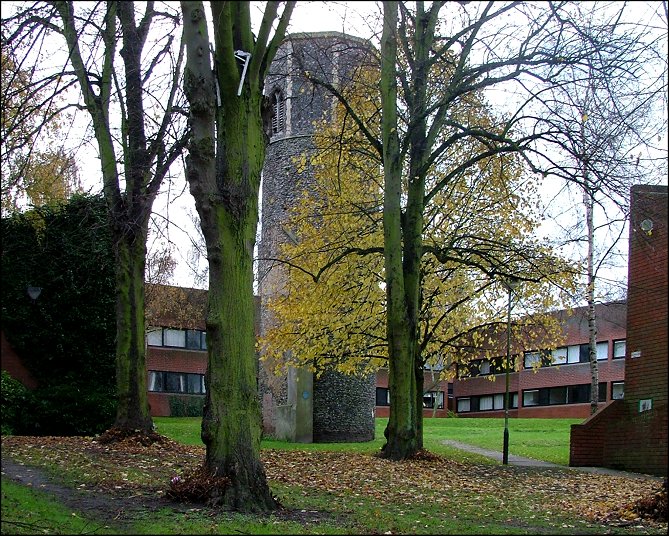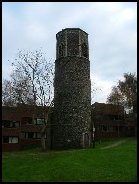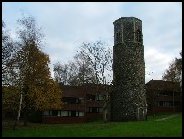
home I index I latest I glossary I introductions I e-mail I about this site
St Benedict, Norwich

Read
the captions by hovering over the images, and click on them to
see them enlarged.


| St
Benedict, Norwich But it had a different feel five hundred years ago, as you can tell from the fact that in its 500-odd metres there are five medieval churches. All of them are redundant now, of course; St Laurence is one of Norwich's biggest, St Gregory probably its most interesting, St Margaret is used for exhibitions and St Swithin is the excellent Norwich Arts Centre. But it is the most westerly, St Benedict, which proudly gives the street its name. It isn't clear how much medieval had survived to be bombed anyway. There was a fine font, which you can see in some more of George Plunkett's photographs below, and I assume that this was smashed by the bombers. But other than this, Spencer and Kent recall that St Benedict underwent two major 19th century restorations; in 1869 it was repaired and reroofed, but by 1896 it had become 'delapidated and dangerous', the arcade to the single north aisle being replaced with cast iron columns, which you can see in George's photographs and Robert's drawing, unnaturally exposed. This essential yet ultimately futile repair was probably a symptom of the neglect that was inevitable when Norwich's many churches had such tiny congregations. The parish was also tiny - surviving Ten Bell Lane to the west was actually in St Swithin parish - and like St Gregory at the other end of the street, St Benedict was accessible from both Pottergate and St Benedict's Street, its graveyard stretching between the two. In an odd kind of way, St Benedict was actually rebuilt. The system of compensation after the war meant that the Diocese of Norwich was paid war reparation money for this church, as long as it was spent on reconstruction. However, it did not have to be on the same spot, and so the new St Benedict opened in 1956 where the need was greater, in the middle of Lowestoft on the Gunton estate. The bell from the Norwich church tower was rehung in the new church. It is actually in Suffolk, and you can see what it looks like on the Suffolk site. A fine new church in Suffolk, and an excellent housing scheme around the ruin here, are not matched by the other side of St Benedict's Street, I am afraid. Here, the cleared rubble gave way to a car park, and in recent years this has been replaced by vast Toys R Us and TK Maxx hypermarkets, those churches of the modern age, and a rude awakening after a pleasant stroll along St Benedict's Street. Perhaps our planning policies today are not as demanding as they were in the 1950s and 1980s. Simon Knott, December 2005 |
You can see thousands of George Plunkett's other old photographs of Norwich on the Plunkett website
Amazon commission helps cover the running costs of this site.
home I index I latest I introductions I e-mail I about
this site I glossary
Norwich I ruined churches I desktop backgrounds I round tower churches
links I small
print I www.simonknott.co.uk I www.suffolkchurches.co.uk